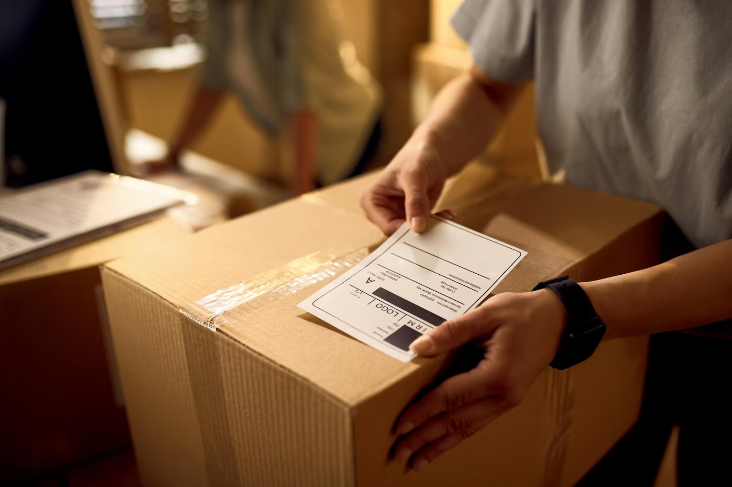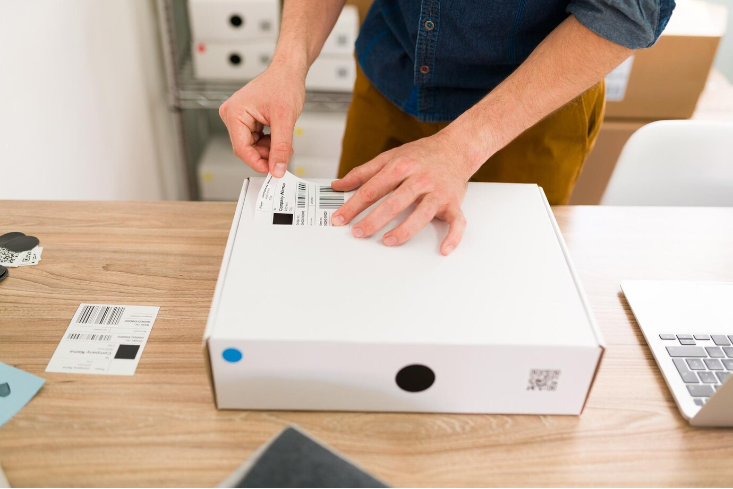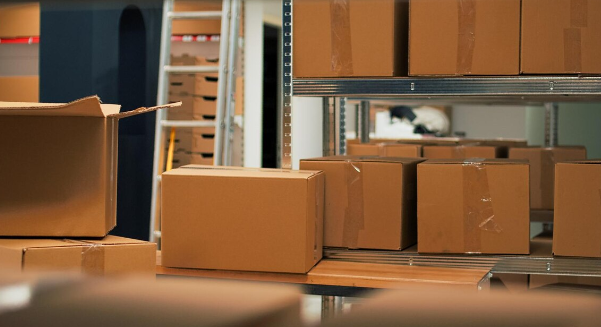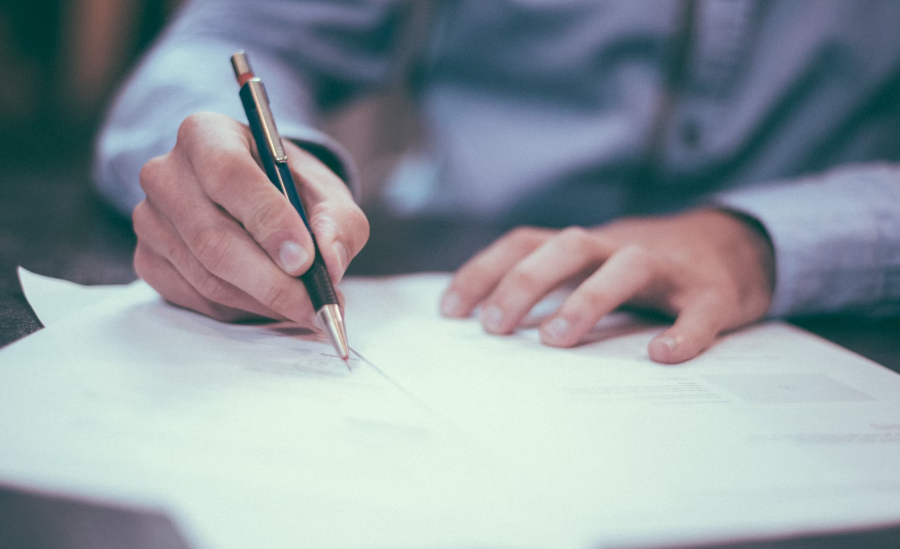Table of Contents
Amazon FBA Packaging Requirements 2025: A Seller’s Guide to Compliance and Success
Time: Jul 08,2025 Author: SFC Source: ppcm.com.cn
One packaging misstep could destroy your Amazon FBA profitability before your first sale. With 67% of new sellers facing shipment rejections due to non-compliant prep—triggering fees up to $6.90/cubic ft and delayed launches—mastering Amazon’s evolving packaging rules is non-negotiable.This definitive 2025 guide cuts through the complexity, revealing exactly how to package everything from leak-prone liquids to fragile electronics for FBA success. You’ll get battle-tested strategies for labeling, dunnage, and shipment prep used by top SendFromChina clients to achieve 99.7% Amazon acceptance rates. Stop risking costly penalties and customer returns—implement these Amazon FBA packaging requirements and sell with confidence.

1. What Role Does FBA Play in Order Fulfillment?
Amazon’s Fulfillment by Amazon (FBA) program revolutionizes supply chain management for e-commerce sellers. By leveraging Amazon’s global warehouse network, sellers delegate storage, packing, shipping, returns handling, and customer service to Amazon. FBA model transforms complex logistics into a scalable solution: Products shipped to Amazon’s fulfillment centers are stored until sold, then picked, packed, and shipped by Amazon’s staff—often reaching customers within 2 days with Prime eligibility.For cross-border sellers, FBA eliminates local warehousing costs and simplifies international sales, though proper packaging remains the seller’s responsibility. Failure here triggers costly penalties: rejected shipments, disposal fees, or long-term storage fees up to $6.90/cubic foot.
2. Essential Amazon FBA Packaging Requirements
Adhering to FBA packaging requirements is crucial for sellers to ensure smooth processing at fulfillment centers, prevent delays, and maintain customer satisfaction. Non-compliance can lead to shipment rejections, additional fees, or even suspension from the FBA program. Below is a comprehensive breakdown of the essential packaging requirements for 2025.
2.1 General Packaging Requirements
Amazon has specific guidelines to ensure products are safely stored and shipped:- Box Dimensions and Weight: Boxes should not exceed 25 inches on any side and must weigh less than 50 lbs unless a single item exceeds this weight.
- Packaging Integrity: Use sturdy, six-sided boxes with intact flaps. Seal all seams with strong tape to prevent openings during transit.
- Product Protection: Ensure products can withstand a 3-foot drop test without damage.
2.2 Specific Products Packaging Requirements
Different products may have unique packaging needs:- Sold as Set: Items sold as a set must be packaged together and labeled as "Sold as set" to prevent separation.
- Poly-Bagged Units: Poly bags must be transparent, at least 1.5 mil thick, and include a suffocation warning if the opening is 5 inches or larger.
- Case-Packed Products: All units in a case must have matching SKUs and be in the same condition. Each case can contain up to 150 units.
2.3 FBA Labeling Requirements
Proper labeling is crucial for inventory management:- FNSKU Labels: Each unit must have a scannable FNSKU barcode unique to the seller.
- Label Placement: Place labels on a flat surface of the product or packaging, ensuring they are not on corners or curves.
- Cover Existing Barcodes: Any other scannable barcodes must be covered to prevent confusion during scanning.
For more info about Amazon FBA Labeling Requirement
2.4 FBA Packaging Materials
Use approved materials to protect your products:- Acceptable Materials: Bubble wrap, poly bags, shrink wrap, inflatable air pillows, and heavy-weight kraft paper.
- Prohibited Materials: Shredded paper, packing peanuts, and foam strips are not allowed as they can cause issues during processing.
3. Best Practices for Packaging Your Products
Adopting efficient packaging strategies not only guarantees compliance with Amazon’s standards but also greatly minimizes the likelihood of product damage during shipping and handling.
Select Appropriate Box Sizes and Materials
- Right-Sized Boxes: Choose boxes that closely fit your products to minimize movement during transit. Allow at least 2 inches of cushioning material on all sides to absorb shocks.- Box Strength: Use corrugated cardboard boxes with a minimum burst strength of 200 lbs or a 32 Edge Crush Test (ECT) rating. This ensures the box can withstand the rigors of shipping.
Utilize Quality Packing Materials
- Approved Materials: Use bubble wrap, inflatable air pillows, or heavy-weight kraft paper to cushion products. These materials provide adequate protection and are compliant with Amazon's guidelines.- Avoid Prohibited Materials: Do not use packing peanuts, shredded paper, or foam strips, as these can cause issues during processing at fulfillment centers.
Ensure Proper Sealing and Labeling
- Sealing: Secure all box seams with strong tape, such as pressure-sensitive plastic tape or water-activated reinforced tape. This prevents boxes from opening during transit.- Label Placement: Place shipping labels on a flat surface of the box, avoiding edges or seams. Ensure labels are not covered by tape or other materials.
Conduct Drop Tests
- 3-Foot Drop Test: Simulate real-world handling by dropping the packaged product from a height of 3 feet on all sides and corners. The product should remain undamaged to pass the test.Standardize Packaging Procedures
- Consistent Processes: Develop standard operating procedures for packaging to ensure consistency across all products. This reduces errors and ensures compliance with Amazon's requirements.Use Poly Bags Correctly
- Specifications: If using poly bags, ensure they are at least 1.5 mil thick and transparent. Bags with openings larger than 5 inches must have a suffocation warning label.- Sealing: Poly bags must be completely sealed to prevent product exposure.
Avoid Over-Packaging
- Efficiency: Use the minimal necessary packaging to protect the product. Over-packaging increases shipping costs and environmental impact.Consider Sustainability
- Eco-Friendly Materials: Opt for recyclable or biodegradable packaging materials to align with environmental standards and customer preferences.Prepare for Seasonal Variations
- Weather Considerations: During colder months, use materials that can withstand low temperatures without compromising product integrity.Train Your Team
- Education: Ensure all team members involved in packaging are trained on Amazon's requirements and best practices to maintain consistency and compliance.4. Steps to Send Your Products to Amazon FBA
Successfully sending your products to Amazon's Fulfillment Centers involves a series of well-defined steps. By following these, you ensure that your inventory is received promptly and is ready for sale, minimizing potential delays or issues.
Step 1: Prepare Your Products
Before initiating the shipment process, ensure that your products are:- Properly Packaged: Use sturdy boxes that can withstand transit.
- Correctly Labeled: Each unit should have a scannable barcode (UPC, EAN, or FNSKU).
- Compliant with Amazon's Requirements: Adhere to Amazon's packaging and labeling guidelines to avoid delays or additional fees.
If you prefer, Amazon offers a Prep and Label Service for a fee, or you can utilize third-party prep centers to handle this step.
Step 2: Create a Shipping Plan
Amazon has streamlined the shipment creation process with the "Send to Amazon" workflow.Accessing the Workflow:
- Log in to your Amazon Seller Central account.
- Navigate to Inventory > FBA Inventory.
- Click on Shipments and select Send to Amazon.
Creating the Shipping Plan:
- Select Products: Choose the items you wish to send.
- Enter Ship-From Address: Specify the origin of the shipment, which could be your warehouse, home, or a supplier's address.
- Choose Packing Type:
Individual Products: Different products packed together.
Case-Packed Products: Identical products packed in the same box.
- Set Quantity: Indicate the number of units for each product.
- Labeling Preferences: Decide whether you'll label the products or have Amazon do it for a fee.
Step 3: Prepare Shipment Details
After setting up your shipping plan:- Packing Templates: Create or select existing templates detailing box contents, dimensions, and weight.
- Box Content Information: Provide details about the contents of each box to facilitate efficient processing at the fulfillment center.
- Print Labels: Generate and print the necessary labels for each box. Ensure labels are placed on a flat surface and are easily scannable.
Step 4: Choose a Shipping Method
Amazon offers two primary shipping options:- Small Parcel Delivery (SPD): Suitable for individual boxes. You can use Amazon-partnered carriers like UPS for discounted rates.
- Less Than Truckload (LTL)/Full Truckload (FTL): Ideal for large shipments on pallets. Coordination with carriers and scheduling delivery appointments may be necessary.
Selecting Amazon-partnered carriers often simplifies the process and can be more cost-effective.
Step 5: Ship Your Inventory
With everything prepared:- Schedule Pickup or Drop-off: Arrange for your carrier to pick up the shipment or drop it off at the designated location.
- Monitor Shipment: Use the Shipping Queue in Seller Central to track the status of your shipment.
- Confirm Delivery: Once Amazon receives and processes your inventory, your products will be available for sale.
5. Common FBA Packaging Mistakes & How to Avoid
Adhering to Amazon's FBA packaging requirements is essential for ensuring smooth operations and maintaining customer satisfaction. Here are some prevalent packaging mistakes sellers make and strategies to prevent them:
Inaccurate or Missing Labels
Mistake: Failing to apply the correct FNSKU labels or placing them improperly can lead to inventory mismanagement or shipment rejections.Solution: Ensure each unit has a scannable FNSKU label unique to your seller account. Place labels on a flat surface of the product or packaging, avoiding corners or curves. Cover any existing barcodes to prevent confusion during scanning.
Using Prohibited Packaging Materials
Mistake: Utilizing materials like packing peanuts, shredded paper, or foam strips, which are not allowed by Amazon.Solution: Stick to approved packaging materials such as bubble wrap, inflatable air pillows, and heavy-weight kraft paper.
Overpacking or Underpacking Products
Mistake: Using boxes that are too large or too small, leading to increased shipping costs or product damage.Solution: Select appropriately sized boxes that accommodate your products snugly, using sufficient cushioning to protect items without excessive void fill.
Ignoring Product-Specific Packaging Requirements
Mistake: Neglecting special packaging needs for certain products, such as liquids, fragile items, or sharp objects.Solution: Familiarize yourself with Amazon's specific packaging guidelines for various product categories. For instance, liquids should be double-sealed, and sharp items must be securely wrapped.
Non-Compliance with Box Weight and Dimension Limits
Mistake: Exceeding Amazon's maximum box weight of 50 lbs or size limitations, leading to shipment rejections or additional fees.Solution: Ensure that each box does not exceed 50 lbs and adheres to Amazon's dimensional requirements. If a single item exceeds these limits, label it appropriately as "Team Lift" or "Mechanical Lift" as needed.
Inadequate Sealing of Packages
Mistake: Failing to properly seal boxes, resulting in openings during transit and potential product loss or damage.Solution: Use strong tape to seal all seams of the box securely. Ensure that the box is sturdy and all flaps are intact to maintain package integrity.
Incorrect Handling of Multi-Pack or Bundled Items
Mistake: Not labeling multi-pack or bundled items correctly, leading to separation during fulfillment.Solution: Clearly label such items as "Sold as set" or "Do not separate" to ensure they are kept together throughout the fulfillment process.
Overlooking Amazon's Packaging Updates
Mistake: Not staying informed about changes in Amazon's packaging requirements, which can lead to non-compliance.Solution: Regularly review Amazon's FBA packaging guidelines and updates to ensure ongoing compliance.
6. Tips for Successful Amazon FBA Prep
Proper preparation is crucial for ensuring that your products meet Amazon's Fulfillment by Amazon requirements. Adhering to these guidelines not only facilitates smooth processing at fulfillment centers but also enhances customer satisfaction. Here are some essential tips to help you excel in your FBA prep:
Understand Amazon's Prep Requirements
Before sending your products to Amazon's fulfillment centers, familiarize yourself with their specific prep requirements. These guidelines cover aspects such as packaging materials, labeling, and product condition. Ensuring compliance helps avoid delays, additional fees, or inventory rejection.Use Quality Packaging Materials
Invest in sturdy packaging materials to protect your products during transit and storage. Amazon recommends using:- Corrugated boxes that meet the required specifications.
- Poly bags with a minimum thickness of 1.5 mils and suffocation warnings for openings 5 inches or larger.
- Bubble wrap or other cushioning materials for fragile items.
Avoid prohibited materials like packing peanuts, shredded paper, and foam strips.
Label Products Accurately
Each unit must have a scannable barcode (FNSKU) unique to your seller account. Ensure labels are:- Clearly visible and placed on a flat surface.
- Not on corners or curves to facilitate scanning.
- Covering any existing barcodes to prevent confusion.
Proper labeling ensures accurate tracking and inventory management.
Conduct Quality Checks
Before shipping, inspect your products for any defects or damages. Ensure that:- All items are in new condition and meet Amazon's standards.
- Expiration dates are clearly labeled for applicable products.
- Bundles or sets are packaged together and labeled appropriately.
Thorough quality checks help maintain your seller reputation and reduce returns.
Stay Updated with Amazon Policies
Amazon's FBA requirements may change over time. Regularly review their guidelines and stay informed about any updates. This proactive approach ensures ongoing compliance and minimizes potential issues.Partner with Third-Party Logistics Providers
Managing Amazon FBA prep in-house can be resource-intensive, especially as your business scales. Partnering with a Third-Party Logistics (3PL) provider can streamline your operations and ensure compliance with Amazon's stringent requirements.Key Advantages of Using 3PL Services:
- Expertise in Amazon FBA Requirements: 3PL providers specialize in Amazon's packaging and labeling standards, reducing the risk of non-compliance and associated penalties.- Scalability: As your order volume fluctuates, 3PLs can adjust their services to meet your needs without the overhead of managing additional staff or facilities.
- Time and Cost Efficiency: Outsourcing logistics allows you to focus on core business activities like marketing and product development, potentially reducing operational costs.
- Advanced Technology Integration: Many 3PLs offer real-time inventory tracking and analytics, providing better visibility into your supply chain.
- Strategic Warehousing: With warehouses located near Amazon fulfillment centers, 3PLs can expedite shipping times and reduce transportation costs.
7. Conclusion
Adhering to Amazon's FBA packaging requirements is essential for smooth operations and customer satisfaction. By following the guidelines and best practices outlined in this guide, you can minimize issues and focus on growing your business.8. FAQs
Q1: Can I use any box to ship products to Amazon FBA?
No, boxes must meet Amazon's size and weight requirements and be sturdy enough to protect the contents.Q2: Do I need to label each product individually?
Yes, each unit must have a scannable FNSKU label unique to your seller account.Q3: Are there specific materials I should avoid in packaging?
Yes, avoid using materials like packing peanuts, shredded paper, and foam strips.Q4: What happens if I don't follow Amazon's packaging requirements?
Non-compliance can lead to shipment rejections, delays, or additional fees.Q5: How can I ensure my packaging meets Amazon's standards?
Regularly review Amazon's guidelines, train your team, and use checklists to verify compliance. Post Views:3082
Post Views:3082
Copyright statement: The copyright of this article belongs to the original author. Please indicate the source for reprinting.
Previous Post
What Does Order Fulfilled Mean? A Complete Guide for Online Shoppers
Next Post
What Is ERP? A Comprehensive Guide to Enterprise Resource Planning
TAGS
Hot Research
Get a Custom China Fulfillment Solution with FREE Storage for 60 Days
 Want to know about our services, fees or receive a custom quote?
Want to know about our services, fees or receive a custom quote?
 Please fill out the form on the right and we will get back to you within a business day.
Please fill out the form on the right and we will get back to you within a business day.
 The more information you provide, the better our initial response
will be.
The more information you provide, the better our initial response
will be.





 TAGS:
TAGS: